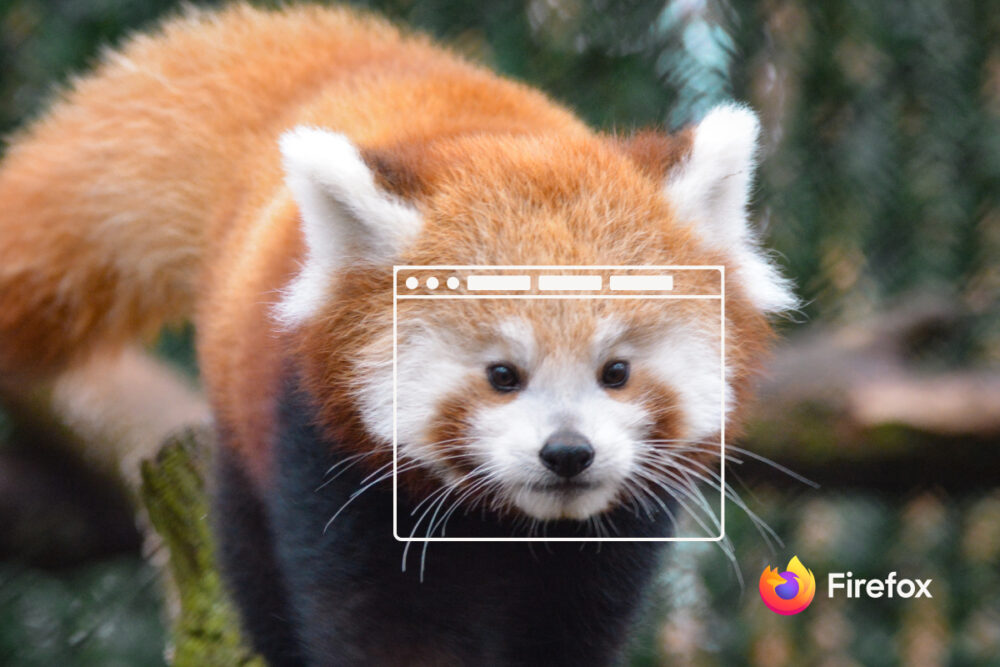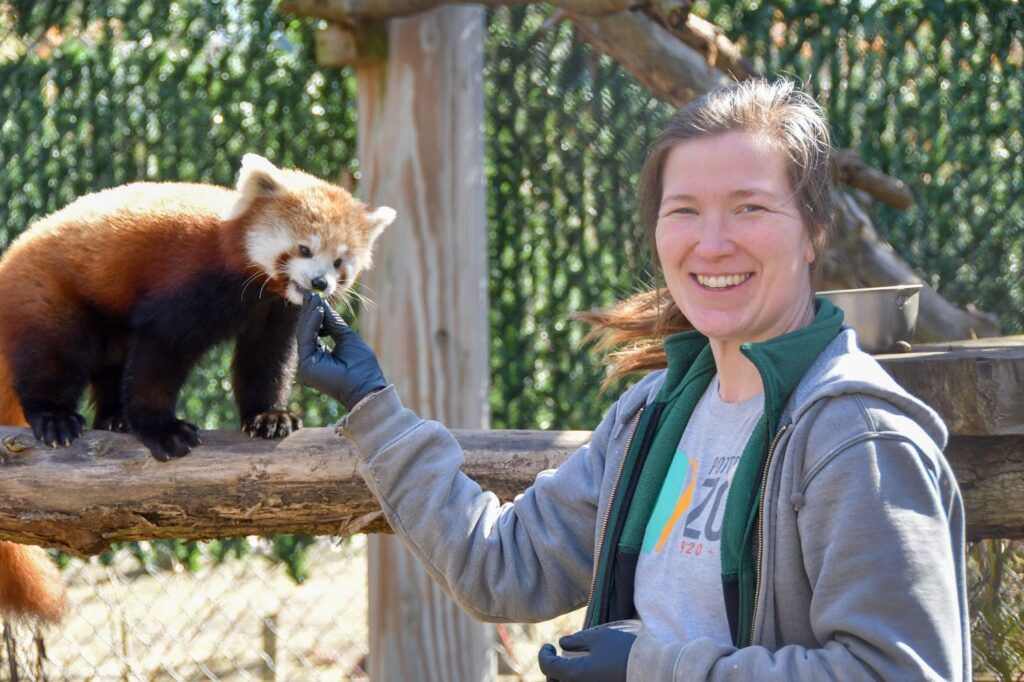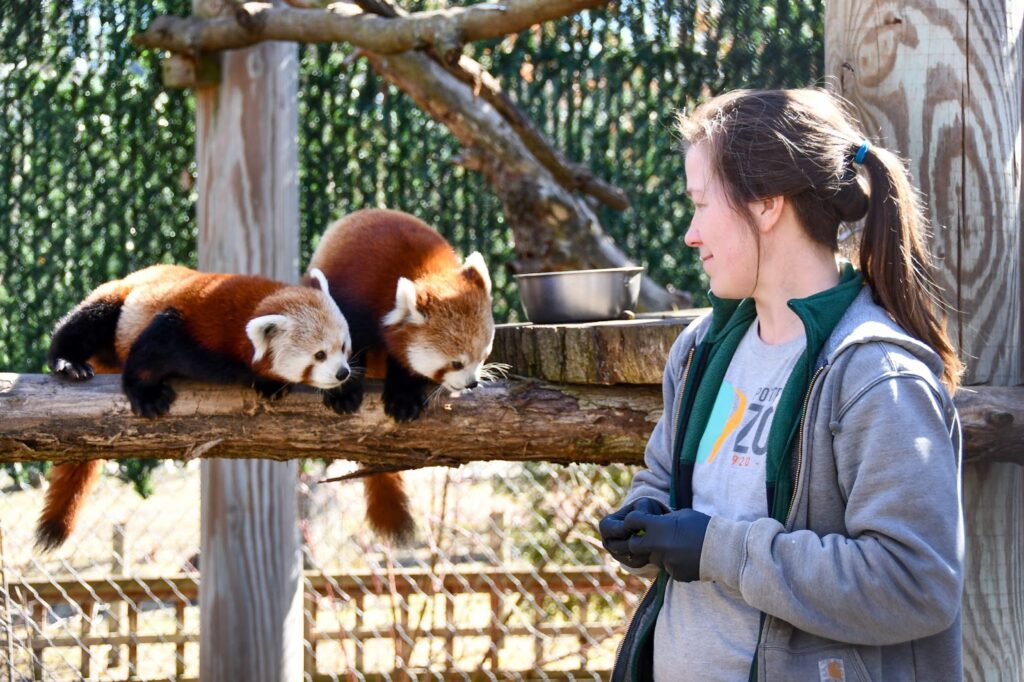
Firefox IRL: Meet Deagan, Maliha and Wilson, Michigan Potter Park Zoo’s red panda family
Did you know that the red panda is also known as a firefox? Sept. 16 is International Red Panda Day, so we thought it would be a good time to visit a Firefox, ahem red panda, in real life and talk to their caretakers at zoos across the U.S. See our full series of interviews here.
This past July marked the first birthday of Potter Park Zoo’s newest red panda, Wilson. His birth last year is part of the Association of Zoos and Aquariums (AZA)’s red panda Species Survival Plan Program. To maintain genetic diversity in the red panda population, the Michigan zoo’s female red panda Maliha was paired with Deagan Reid, and together they brought Wilson into this world.
The family’s caretaker is Carolyn Schulte, carnivore and primate keeper at Potter Park Zoo. Carolyn grew up loving animals and is close to celebrating 10 years at the zoo. Carolyn tells us the advantages of having a solo cub to help care for, as well as how she and others on the team are able to deepen their relationship with the cub through close contact.
Tell us about the red pandas you care for.
“We currently house three red pandas: Deagan Reid (dad), Maliha (mom) and Wilson (son). Deagan Reid is a great panda but prefers to do his own thing. He is willing to work with keepers for his favorite treat (pear) but more often prefers napping in a high spot in his habitat. Maliha is a very keeper-oriented panda, even when her favorite treat (grapes) is not involved, although she will never turn one down. This affinity for her caretakers means we have been able to train some helpful behaviors, including awake voluntary ultrasound, which we have used to confirm each of her three pregnancies. Wilson is our newest addition, born last July, and he had quickly become a staff favorite. Red pandas can have litters of one to four, with two being the most common, but Wilson was born as a solo cub. This means he got our undivided attention while still in the nest box, and he quickly learned that keepers usually mean snacks. He is a playful, inquisitive and intelligent panda and is a joy to work with.”

What’s the coolest part about working with red pandas?
“Unlike most of the other animals in my department, red pandas are not protected contact, but free contact, meaning we can share space. This makes caring for them and training them much simpler and means it is easier to develop close relationships. Due to this close relationship, we also get to be more involved when cubs are born since our female Maliha allows us to check in on the cubs’ progress almost daily without getting stressed. We can also start forming relationships with the cubs at a young age while they are still in the nest box, which makes caring for them and training behaviors much easier.”
How did you get your start as a zookeeper?
“I always loved animals and knew I would work with them someday, I just didn’t know what that looked like. It wasn’t until I went to MSU and found out they had a degree in zoology with a concentration in zoo and aquarium science that I realized zookeeping was a real career pathway worth pursuing. I interned at John Ball Zoo in Grand Rapids during college and worked there as a keeper aide the summer after graduating. I heard Potter Park Zoo had a paid internship available, so I applied and got it! After the internship I applied twice to open full-time keeper positions here before being hired on. I’m now almost to my 10-year work anniversary.”

What does your typical day look like?
“A typical day is busy. It begins with checking on and feeding all the animals I’m responsible for that day. The zoo is divided up into three animal departments, and each department is divided among two or three keepers on a given day. Most of the animals I work with require protected contact (humans and animals never share space), so feeding usually happens in off-exhibit spaces, giving me a chance to clean and check exhibits before sending animals back out for the day. This is also a good time to place enrichment (anything that encourages an animal to exhibit natural behaviors) in the exhibit. The middle of the day involves cleaning off-exhibit spaces and doing any projects that need to get done. The end of the day involves another round of checking on animals and feeding before leaving for the night.”

For visitors to the Potter Park Zoo, there are daily keeper talks, where you can learn fascinating facts and insights about the red pandas.
Thank you, Carolyn, for sharing your photos and stories about the red panda family. We wonder how Potter Park Zoo will celebrate Wilson’s first birthday. Is the traditional smash cake for the first birthday also a thing for red pandas?


